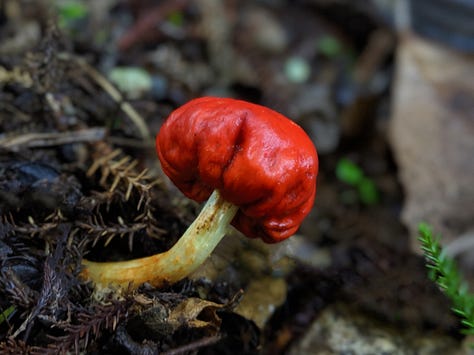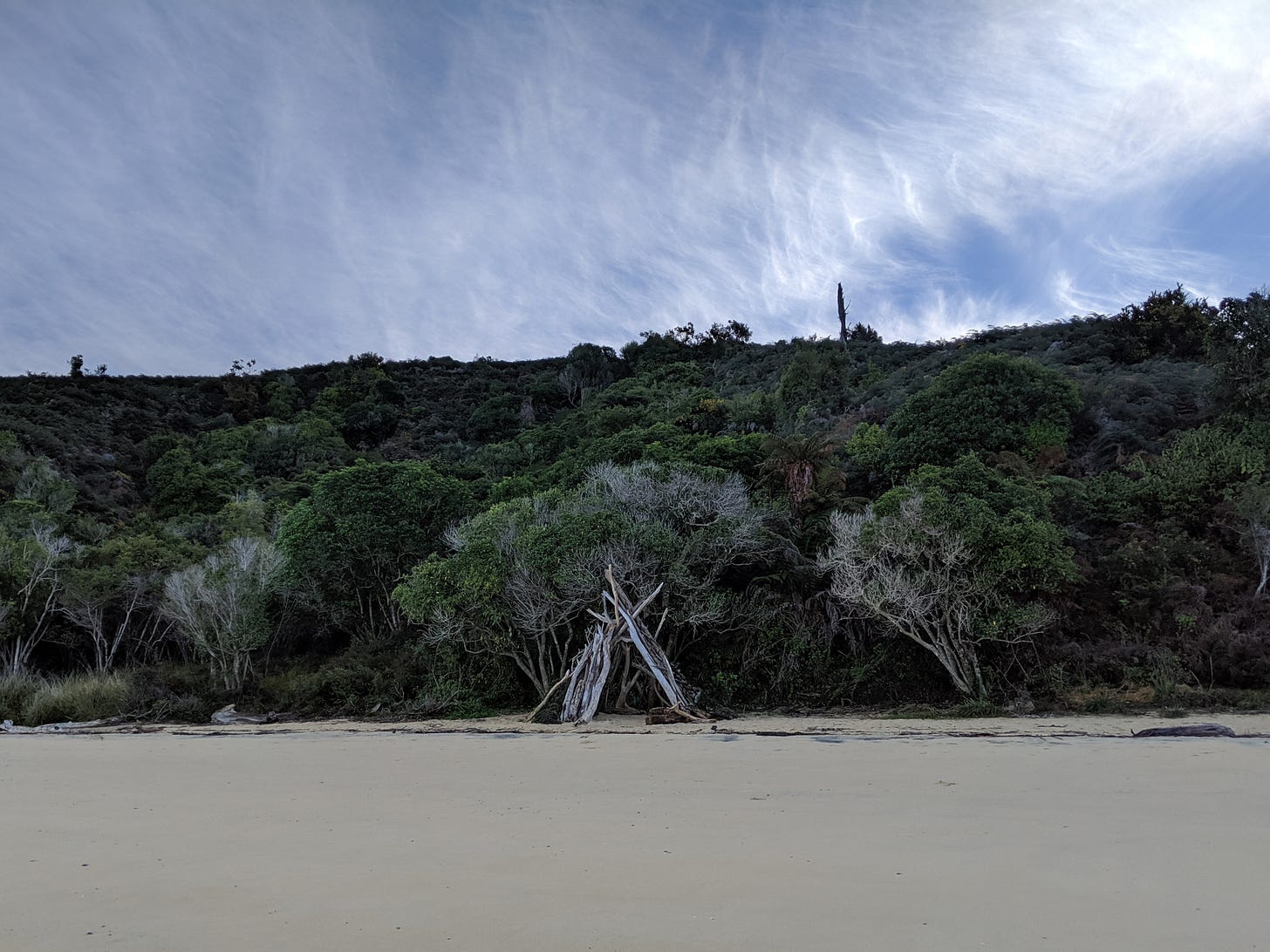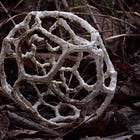A Winter Exploration of Abel Tasman National Park's Fungi
Exploring the diversity of New Zealand's South Island mushroom species.
May-Nov, 2019
As the tide recedes a hundred meters from the shore, it reveals undulating ripples of soft sand in its wake.
Cockles, whelks, ostrich shells, conches, seaweed, and driftwood emerge, nestled in a rich slurry of sand and seawater.
Scattered pools cradle anemones, Cat's eye snails, and eleven-armed sea stars.
I carefully dislodge a rock from the wet sand, and it releases a suction-pucker sound as it tips over, sending tiny crabs scuttling for new homes.



Various birds like variable oyster catchers, pied cormorants, weka, blue herons, Canadian geese, and the occasional spoonbill arrive to survey the scene.
Green-lipped mussels cling to the barnacle-encrusted rocks, while fur seals camouflage themselves, basking in the sun.
A Dynamic Coastal Ecosystem
Sandy Bay is a living, shifting landscape; the ebb and flow of the tides constantly reshape its character.
Nestled in Marahau, a mere fifteen-minute drive from Kaiteriteri and an hour and a half from Nelson, this coastal haven is the gateway to Abel Tasman National Park.
For half the year, I called a hillside cottage overlooking Sandy Bay and Fisherman's Island home—a base from which I embarked on a winter-long exploration of the park's every nook and cranny.
Wandering the tideline of Sandy Bay, I watched as shallow waves erased my footprints.
I navigated a landscape of jagged rocks, squidgy kelp, Neptune's pearls, and crushed barnacles, moving like a crab.
Rain pattered the packed sand of Coquille Bay, and I took refuge in a driftwood teepee.
An inquisitive weka joined me, its head cocked as if to say, "What have you brought me?"


I set up my mini burner, boiled water for tea, watched the rain ease, and then ventured back into the bush.
Fungal Mysteries in the Sand
At the edge of grass and sand, I discovered what Maori believed to be ghost dung from Whatitiri, their thunder god.
They called them whareatua—house of the devil—due to their net-like appearance.
White basket fungi, their delicate cages resembling hollow soccer balls, emerged from their gelatinous eggs.
A Forest Alive with Fungi
As I transitioned from the sandy shore to the dense foliage of the forest, the scenery transformed. The sound of waves gave way to the rustle of leaves.
I marveled at the ferns, liverworts, lichen, and leaves blanketing the damp, fallen logs.
Atop the trail, I took in the vista of Coquille Bay below.
I stumble upon an Amanita pareparina, or Maori Palisade Lepidella. It's a rare mushroom, distinguished by its unique appearance that resembles a natural fortress amidst the golden ferns.
Throughout my time in Abel Tasman National Park, I encountered many fungal wonders, like the elusive blue Entoloma hochstetteri, which graces the back of New Zealand's $50 banknote.



The Māori name for the mushroom is werewere-kōkako because its color is similar to the blue wattle of the kōkako bird.
The Unexplored Majority
Of the estimated 25,000 fungi species in New Zealand, a staggering two-thirds remain unclassified, with only 7,000 to 8,000 identified so far.









My experiences here underscore the importance of embracing exploration in all seasons, not just the warm, sun-filled days.
A different world unveils itself in the rain, the cold, and the dampness of the winter months—a spectacle of decomposition, decay, and rebirth.















I'd give this account five hearts and five stars. ⭐⭐⭐⭐⭐❤️❤️❤️❤️❤️